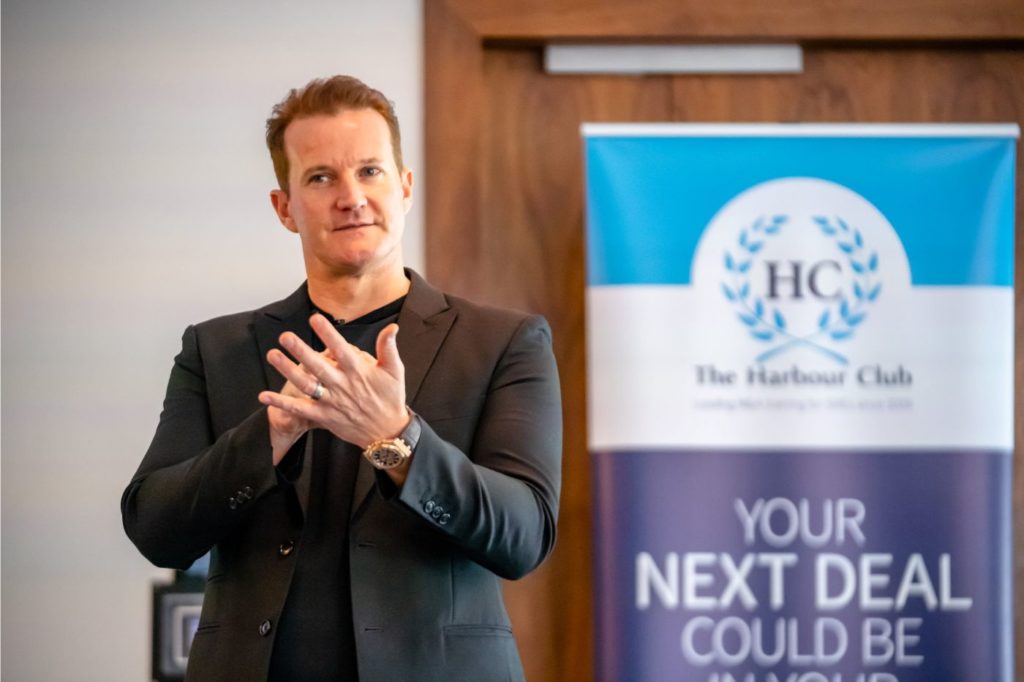Closing the Deal: No One Leaves Until…
If you’re an entrepreneur or have been in sales before, you’re well aware that time kills desire.
In my last few blogs, we’ve discussed setting up the first meeting and then presenting your deal at that first face-to-face meeting. We talked about the fact that the deal is rarely ever signed in that very first meeting, but by presenting your deal and creating a letter of agreement that you will leave with the potential seller, you’ve left the deal in a good place.
But as I said in the beginning, time kills desire. Once you’ve left that letter of agreement with them, you have a short period of time, while they’re still hot, that you can get the deal done. Wait too long and it gets harder. I went through this dozens of times before I worked it out. Deals are like concrete: the longer you leave them, the harder they get. You need to make sure that you strike while the iron is hot. Otherwise:
- You call in a week: “Yeah, still thinking about ”
- Two weeks later: “Yeah, still haven’t had time to think about ”
- Three weeks later, after the fourth call: “Still thinking about ”
- Four weeks, seven calls, and finally calling them from another number: “Still ”
- Five weeks: No answer
- Six weeks: They’ve changed their number, name, and left the
My advice to Harbour Club members is to wait two to three days, so they’ve had the time to think about it. You then call them and say, “Have you thought about it?” The answer 99% of the time is, “No. I’ve been busy. I’ve been doing this and that, and I haven’t had a chance to look at it.” And that may all be true. But you need to get them moving.

You need to polarize them—make them go in one direction or the other. Find out whether there’s a possible deal or if it’s a dead duck. Say, “Okay. I understand, you haven’t had a chance to think about it yet, but are we roughly on the same page? Or are we in completely different ballparks?”
The answer you’re looking for is, “Well, yeah, more or less, but I don’t like, X, Y, Z.” Or, “More or less, but I don’t think I want to give up all the company for a dollar.” What you’re doing here is trying to elicit an extra objection.
If they say, “No, we’re not even in the same ballpark,” then at least you know it’s not the deal for you, and you need to go and kiss a different frog to see if there’s a prince or princess inside that one.
Polarize them, so you know if it’s worth spending any more time on it.
They’ve Got a Big But
If they agree that you’re on the same page and give you a “but…“—which is a very important word—then do what I call a, “No one leaves until…“ meeting. Say:
“Okay, how about I come and see you on Friday, at 2 o’clock, and we agree that we’ll just sit there and go through this? And none of us are going to leave until we’ve got the deal in place that works for everyone. If we need to order pizza at midnight, we’ll order pizza at midnight. But we’ll just sit there and get this thing done.”
As soon as they agree to that meeting, they’ve basically closed.
The deal can move a lot in that meeting, and it can change quite considerably from the one that you’ve fleshed out in the letter of agreement. They’ve had more time to think about it, and you’ve had more time to think about it. The good news is that the deal that ends up being done in this meeting tends to be the right one.
This meeting also creates a time limit around getting an agreement. If you don’t create that time limit, the deal can drag on and on and on. And, distressed businesses don’t often get themselves out of trouble. They tend to get themselves into more trouble the longer they continue doing the same kinds of things.
When I did that first deal with the telecom company, I had the ticking time bomb of the lease expiring and the bulldozers revving up. This strategy replaces the bulldozers. It creates some time pressure when, really, there isn’t any. It helps drag the transaction over the line.
Daniel’s Print Company
So, does this all really work? It does! Here’s Daniel’s story. He’s a three-time Harbour Clubber (and counting). He bought a printing company using the techniques I’ve been sharing here.

When he sat down and did the initial term sheet, he was going to take an 80% stake in the company and repay a $200,000 director’s loan over the coming years. The director’s loan was money the owner had put into the company over the years.
Daniel set up a “No one leaves until…“ meeting with the owner, with the goal of finalizing the deal. He ended up taking a 40% stake in the printing company, but the owner wrote off the director’s loan
While Daniel walked into the meeting with a deal in mind, the final deal on the table was completely different. He was open-minded and prepared to negotiate to find the best deal. The final deal was the right deal because it worked for both sides. Clearly, the owner initially valued the money he had put in more highly but, when it came down to it, he still believed in the business and wanted more equity—a great sign for Daniel that he was buying into a business that was worth saving.
Daniel structured the deal using a Harbour Club agreement, which meant he still had control of the company even though he didn’t own the mythical 51%. (I’ll share more about that in an upcoming blog.) With 40% of the business, Daniel still called the shots.
It’s great when deals work out to be a win-win! Of course, there’s a lot of work that goes on in between these steps that make them win-win. Next time, I will share insights on business valuation—something I feel is a very interesting, yet massively misunderstood, area in doing deals. Join me then.
Until then, do you have any questions I could answer? Post ‘em below, and I’ll respond.
Let’s Connect!
HarbourClubUSA.com
Unity-Group.com



